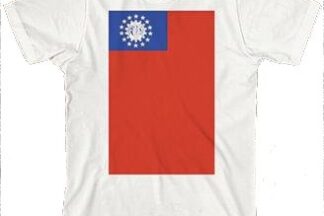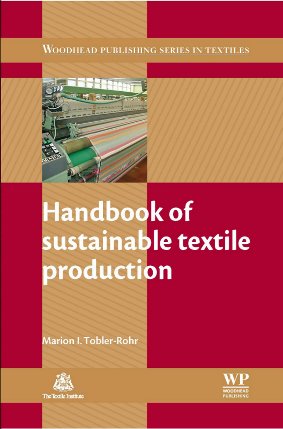The Manifesto of a Hummingbird: . 13 + 1 ways to make a stance for responsible business and leadership.
The more time I spend ‘doing sustainability’, i.e. being involved both as a professional as well as as an individual in cajoling, motivating, convincing and helping companies – and the individuals therein - to become ‘better citizens’, the more I realised that … actually, in would not be that hard to do better.
Or let me reformulate more accurately: it is equally hard as many other things in businesses.
The quality of governance is one of the key ingredients why projects, companies, and even governments fail in their tasks. It is also the key ingredient to achieve results, buy-in and participation. It is for this very reason that good governance was seen early on as one of the fundamental success factors for the Social Labor Convergence Project (SLCP).
Italy. Known for the style of its inhabitants, the quality and sharp cut of its suits, the inventiveness of its fashion designers, the quality of its fabrics. Yet, if we were to talk sustainability in textiles and fashion, what is going on on the ground?
The design stage is usually the longest, most expensive and riskiest part of the chain. Additionally, research has shown that at least an estimated 80% of a product's environmental (and to a lesser degree also social) impact is locked at the design stage into a product. By integrating the product design with the supply chain, companies can compress non-value adding time and costs in their supply chains, increase responsiveness and mitigate supply chain risks – while simultaneously managing (improving) their sustainability performance without added costs or efforts.
What of all that are buyers aware of, and how do they use it?
This is the second of the two questions for which the most insightful research with fairly hard data has been published by Prof. Doug Miller from Northumbria University in Newcastle. The two most relevant papers in this context are: 'What price a living wage' and 'Towards Sustainable Labour Costing in the Global Apparel Industry'
The Higg Index is an apparel and footwear industry self-assessment standard for assessing environmental and social sustainability throughout the supply chain.
The Higg Index 1.0 was released on June 26, 2012.
During the former Soviet Union, Ukraine developed as one of the largest centres of textile industry, representing approximately 50% of the entire SU's textile industry. And even after the SU fell to pieces, the Ukraine for quite some time remained with its manufacturing power. So, what is the status quo today?
What do we know about how garment cost is broken down across the supply chain? This is the first of the two questions for which the most insightful research with fairly hard data has been published by Prof. Doug Miller from Northumbria University in Newcastle.
Already early last year the Swedish Fast Fashion retailer H&M announced the placement of test orders for garments from Ethiopian and Kenyan suppliers. And they're not even the first ones: Retailers such as Tesco and Walmart seem to have gone down that lane already some time ago.
Supply chains, as a discipline of expertise, have come out of the hiding and recognise their role in reducing corporate risk. This is notably and specifically the case in fashion and textiles. At the same time, 'design' - not just in the creation room, but in all facets where it impacts the making, delivery and use of a product or service, is increasingly recognised as relevant.
Mid last year, an interesting campaign piece was delivered to my mailbox: London based Offset Warehouse launched a capsule collection of T-shirts retailing at £4.99 (app. Euro 6, plus P&P). Now, the point is, that even if these T-shirt were sold through a major retailer, they would hardly have retailed at more than £10 - and this at a vastly superior quality then is often case.
The wages discussion is far from over. Not 'just' when it comes to the slightly out-of-range bonuses some people in the finance industry, together with a number of high-level executives of other industries, earn. But rather globally, even in 'developed' Western markets. This applies to 'fair wages' for physically handicapped people e.g. the blind, and crosses over to living and minimum wage discussions in the countries such as the UK, the US, or Spain (white collar precariate). The fashion industry would have a lot to tell also in this context.
On September 12 to 14, I attended the European Business Ethics Network (EBEN) yearly conference in Lille, France. The theme of this year’s edition was ‘License to Operate’.
I and my colleague Ilaria Pasquinelli, both presented a research paper, focused on sustainability and value generation in the fashion industry, and the status quo of knowledge on sustainable consumption habits respectively.
Since the moment that Burma's opposition Leader, Aung San Suu Ky, was released from her decade of house arrest it was clear: Nothing would remain the same.
The news is fresh. And it could potentially be some of the most interesting news in the present for cost savvy – and patience as well as unscrupulous investors looking for a somewhat different opportunity: High risk, yes, but potentially with outrageously high returns.
Things in North Korea, secluded for the last 60 years, are undoubtedly changing.
How expensive is fair labour really? This article summarises research data to answer these questions. In short: fair labour could be had for cheap.
The textile supply and production chain is complex. With this in mind, the ‘Handbook of sustainable textile production‘ is a unique resources: bit fosters knowledge acquisition across the different disciplines and specialities in the textile production chain, it prepares the ground for a factual, holistic discourse, and dissemination of best practise.
How expensive is fair labour really? What would need to change in the price to make this a reality at the consumer end of fast fashion? This article diggs through some research data that while answering these questions. In short: fair labour could be had for cheap.
2 weeks after the Rana Plaza’s disaster in Bangladesh, the death toll has risen to 921 and the fire broke in another garment factory last night killing 8.
But how have these fashion brands reacted to, possibly, the worst known disaster in the history of the global apparel industry?





